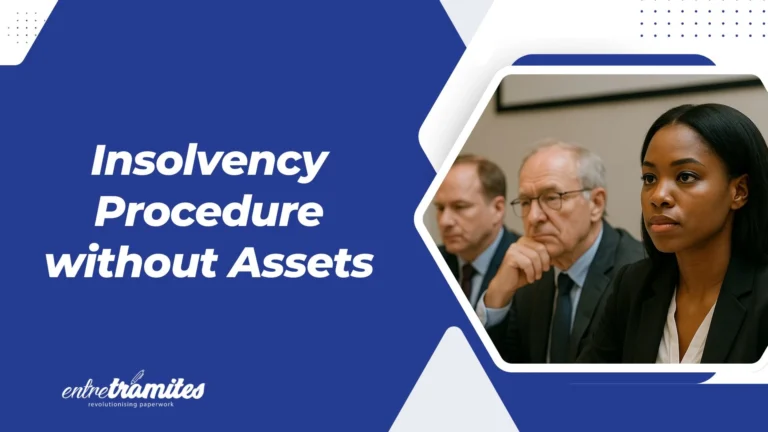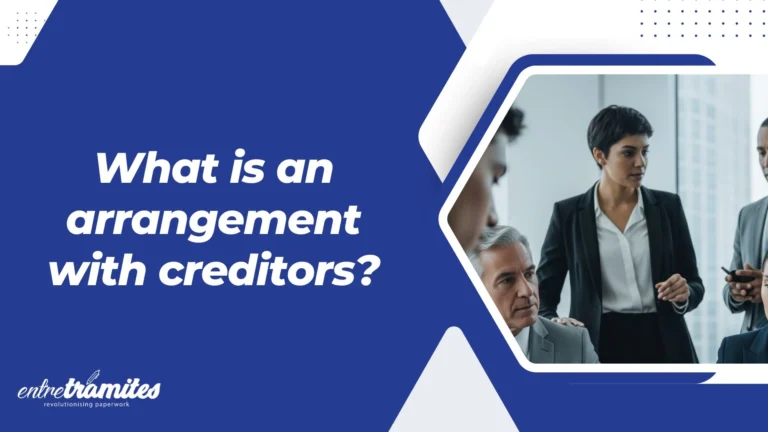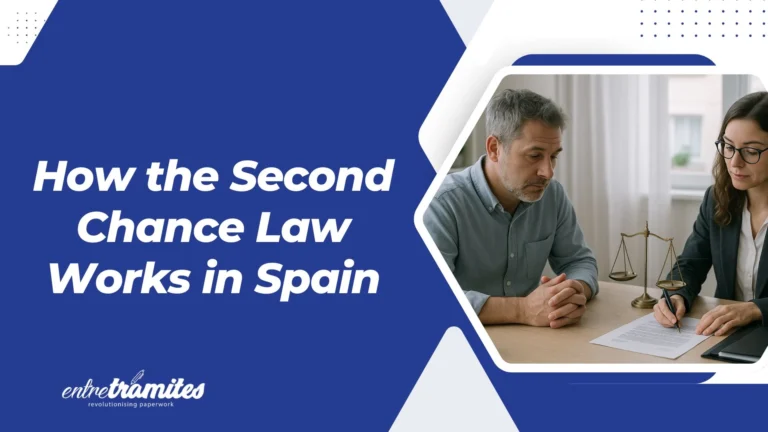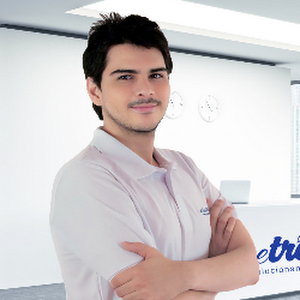In Spain, when a company or individual faces insolvency and doesn’t have enough assets to cover the costs of the legal procedure itself, the law provides a specific pathway: the insolvency procedure without assets. This mechanism, regulated by the Spanish Bankruptcy Law, streamlines the process and avoids unnecessary formalities, ensuring an orderly resolution for the debtor and a degree of certainty for creditors.
In this article, we’ll look at what it is, who can apply for it, its requirements, and how the process works step-by-step.
What Is an Insolvency Procedure without Assets?
An insolvency procedure without assets is a special type of bankruptcy proceeding that applies when the debtor does not have enough assets to pay for the expenses of the process itself.
In other words, there is no “active mass”—no goods, rights, or assets—to even cover the court costs, the fees of the insolvency administrator, or liquidation expenses. This procedure aims to avoid unnecessarily prolonging the process and allows for a faster resolution with less financial and administrative burden.
Requirements to Qualify
For a court to declare a bankruptcy as an “insolvency procedure without assets,” certain legal conditions must be met:
- Absence of Seizable Assets: The debtor has no assets, or their assets are insufficient to cover the costs of the procedure.
- Inability to Effectively Liquidate: Any existing assets are of no economic interest to creditors, or the cost of selling them exceeds the value they would obtain.
- Properly Documented Application: The debtor must prove this situation to the court by providing an inventory and a statement of their financial position.
In practice, small companies in total liquidation, self-employed individuals who have ceased their activity, or individuals without income or property often find themselves in this situation.
The Insolvency Procedure without Assets: Step-by-Step
The process is much shorter than a regular bankruptcy, but it requires following clear steps:
- Submitting the Application: The debtor—or in certain cases, the creditors—submits the bankruptcy application to the commercial court, along with documentation proving the lack of active mass. This includes an inventory of assets, a list of creditors, and proof of insolvency.
- Admission and Verification: The judge examines the documentation, and if they confirm there are not enough assets, they issue a court order declaring the insolvency procedure without assets. This order is published in the Official State Gazette (BOE).
- Notification to Creditors: Creditors are given a deadline to submit allegations or challenge the “no assets” classification if they believe there are, in fact, assets to liquidate.
- Possible Appointment of an Insolvency Administrator: An insolvency administrator is only appointed to verify the financial situation if a creditor requests it and covers the cost.
- Closing the Procedure: In the absence of an active mass, the judge proceeds to close the procedure. At this point, if they meet the requirements, the debtor can apply for the exoneration of unsatisfied liabilities (EPI), also known as the Second Chance Law (Ley de Segunda Oportunidad).
Advantages and Considerations
The insolvency procedure without assets offers several benefits:
- Speed: It reduces deadlines and simplifies bureaucracy.
- Lower Cost: There are no insolvency administration fees unless a creditor requests them.
- A Second Chance: It provides a pathway to debt exoneration if the requirements are met.
However, it’s important to note that this procedure does not prevent creditors from reactivating claims on non-exonerated debts if the debtor’s economic situation improves in the future.
Connection to the Second Chance Law
The insolvency procedure without assets is often the entry point for many individuals seeking to have their debts cancelled through the Second Chance Law. Since there are no assets to liquidate, they can go directly to the exoneration application phase, as long as they meet requirements such as acting in good faith and not having been convicted of economic crimes.
Frequently Asked Questions (FAQs)
What is the difference between an insolvency procedure with assets and one without assets?
In a procedure with assets, there are goods and rights to liquidate and distribute among creditors. In a procedure without assets, these do not exist or are insufficient to cover the costs of the procedure.
Can I apply for an insolvency procedure without assets if I have debts with the Tax Agency or Social Security?
Yes, but you should know that certain public debts cannot be fully exonerated, although they may be reduced or subject to a payment plan.
How long does an insolvency procedure without assets take?
It is usually resolved in a few months, although the exact timeframe depends on the court’s workload and whether creditors submit any allegations.
Ultimately, the insolvency procedure without assets is a legal tool designed for individuals or businesses who, in a state of insolvency, have no assets to liquidate. Understanding its requirements and procedure can be a crucial step toward an orderly conclusion to a difficult economic chapter and, in many cases, a new beginning thanks to the Second Chance Law.
If you need personalized assistance, at Entre Trámites we offer management and tax advisory services for freelancers and SMEs. You can contact us through this contact form for us to call you, or if you prefer, you can schedule a free consultation or write to us on WhatsApp.




